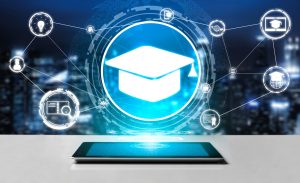- 9 February 2024
- 1240
Education Technology Surveillance Target Minority Students

Introduction:
Imagine a classroom buzzes with Education technology . Students interact with AI tutors, personalized learning plans adjust based on algorithms. And facial recognition software tracks their engagement. While this vision of education technology (EdTech) promises personalized learning and enhanced effectiveness. A troubling reality lingers for many minority students, this digital landscape threatens to widen the already existing equity gap. And also exposing them to new forms of exclusion and surveillance.
The Unequal Landscape of Education technology

Dr. Maya Garcia a leading researcher in AI ethics and social justice in Education technology ,And warns in her recent report Hidden Biases. The Algorithmic Risks and Surveillance Concerns for Minority Students. That while Education technology holds immense potential. Its implementation cannot exacerbate existing inequalities. She also highlights the persistent digital divide, where access to devices and reliable internet remains unequal. And disproportionately impacting students from low-income and minority communities. Beyond access, however, lies a deeper concern.The potential for AI and surveillance practices to amplify inequalities in harmful ways.
Education technology Surveillance
AI algorithms trained on biased data sets can perpetuate stereotypes and discriminatory practices. Imagine an AI-powered reading program disproportionately flagging writing samples from minority students as needing extra help. Even when content quality is similar. Such biases can limit learning opportunities.
Surveillance Practices and Education technology
Excessive monitoring in schools often justified by safety concerns creates a chilling effect. Facial recognition software used to track student attendance. And might disproportionately flag students of color for distraction based. The microexpressions fostering distrust and stifling open expression. This constant monitoring can turn schools into panopticons. And hindering effective learning and creating a hostile environment for marginalized students.
Targeted Marketing and Data Collection:

Educational platforms collect and share student data. And often without clear consent or transparency. This data can be used for targeted marketing and advertising. The exposing students to discriminatory practices and potentially violating their privacy. Personalized learning platforms recommending resources based on predetermined assumptions. And their background and interests can limit their exposure to diverse perspectives and hinder intellectual growth.
Real-World Examples and Education technology
The concerns are not hypothetical. A recent study found that AI-powered tools used for student discipline disproportionately targeted Black students. Another exposé revealed educational platforms sharing student data with third-party. And advertisers without proper consent. These real-world examples highlight the urgent need for responsible tech implementation. That prioritizes equity and student well-being.
Empowering Voices Education technology

Minority students are not passive recipients of EdTech; they are active participants with voices that deserve to be heard. A growing movement of student activists is speaking out against discriminatory algorithms, demanding transparency in data collection, and advocating for safe and inclusive digital learning environments. Their courage and activism are crucial in shaping a more equitable future of EdTech.
Building Trust and Equity with Education technology
Addressing these concerns requires a multifaceted approach:
Transparency and Accountability:
- Algorithms need to be transparent, openly audited for bias, and developed with diverse data sets. Students and communities should have a voice in shaping AI policies and data governance practices.
Human-Centered Design:
- EdTech development and implementation must prioritize human values. And focusing on inclusivity ethical considerations. And student well being above efficiency and profit.
Critical Thinking Skills:
- Equipping students with critical thinking skills is crucial to navigate the online environment. And also identify biases and advocate for their rights in the digital world.
Culturally Responsive Pedagogy:
- Educators need training and support to integrate EdTech in a culturally responsive way. ensuring fair and equitable learning experiences for all students.
Charting a Path Forward:
Building a truly inclusive digital learning landscape requires collaboration between diverse stakeholders:
- Educators, researchers, and technologists: Collaborative efforts can develop and implement responsible EdTech solutions that prioritize equity and student well-being.
- Policymakers and community leaders: Policy frameworks that protect student privacy, promote data transparency, and hold tech companies accountable are essential.
- Students and families: Empowering students and families to understand their rights, participate in decision-making, and hold stakeholders accountable is vital for long-term progress.
Conclusion:
The promise of EdTech can only be realized if it embraces equity and inclusivity. By acknowledging the risks posed by AI and surveillance, engaging in open dialogue, and working collaboratively, we can chart a path towards a digital learning landscape where technology empowers all students, regardless of their background or identity, to reach their full potential. This future requires proactive measures, responsible implementation, and a collective commitment to ensuring that technology serves as a tool for progress, not a perpetuation of inequality.

